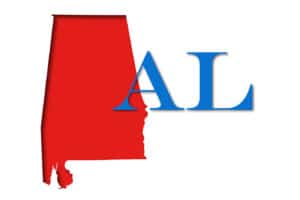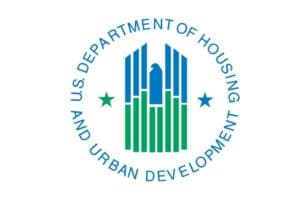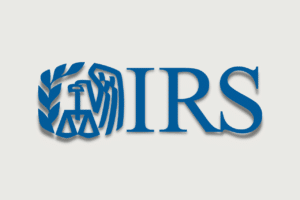Tax Exempt Bonds

2014 NH&RA Annual Meeting & Senior Housing Symposium: Conference Materials
All conference materials, PowerPoint presentations, relevant articles, reports, memos, etc. from the 2014 NH&RA Annual Meeting are available below under the relevant session titles. Click below to learn more about the topics that were covered at the meeting! Conference Recordings of each session will be available in NH&RA’s Online Store following the conference.

Harvard Joint Center for Housing Studies Releases New Report at Washington Event
On December 9, 2013, the Joint Center for Housing Studies of Harvard University (JCHS) released a new report on U.S. renters and rental housing characteristics, conditions, and trends during an event at the Newseum in Washington, D.C. The report, America’s Rental Housing: Evolving Markets and Trends, describes how the 2008 recession has impacted rental housing trends. Currently, there are 43 million rental households, representing 35% of Americans — the highest rate in more than a decade. Additionally, a disproportionate amount of lower-income families and individuals living in rental housing pay an excessive share of their income towards rent. Because of the vast changes in housing, many consider America to be experiencing the worst crisis today in renter affordability.

NH&RA 2013 Fall Developers Forum: Conference Materials Available!
All conference materials, PowerPoint presentations, relevant articles, reports, memos, etc. from the 2013 Fall Forum are available below under the relevant session titles. Click below to learn more about the topics that were covered at the meeting!

IRS Sets State Credit Ceilings for 2014
The Internal Revenue Service (IRS) announced in Revenue Procedure 2013-35 that it has set the inflation-adjusted State credit ceiling for the Low-Income Housing Tax Credit (LIHTC) program and private activity bond caps for calendar year 2014.

NCHMA 2013 Annual Meeting: Conference Materials Available!
All conference materials, PowerPoint presentations, relevant articles, reports, memos, etc. from the 2013 NCHMA Annual Meeting are available for download.

Affordable Housing in the New England Region: A New Special Report
Multifamily housing developers, community organizations, investors, and lenders interested in affordable rental housing in New England have a new resource available that provides a comprehensive overview of current opportunities. A special report entitled “A Variety of Approaches: New England State Agencies Differ in Needs, Priorities in Their Housing Credit Programs” reviews recent and current tax credit allocation activity, project trends, and state priorities in the New England states ““Connecticut, New Hampshire, Maine, Massachusetts, Rhode Island, and Vermont.

House, Senate Appropriations Committees Approve FY 2014 HUD Spending Measures
The U.S. Senate and House of Representatives Appropriations Committees have both approved the T-HUD Subcommittee versions of the fiscal year (FY) 2014 Transportation, Housing and Urban Development (T-HUD) and FY 2014 Agriculture and Rural Development funding bills.

Senators Introduce Bill to Fix 9% and 4% Housing Credit Rates
Senator Maria Cantwell (D-WA) and a group of bipartisan Senators together re-introduced S. 1442, which would amend the Internal Revenue Code of 1986 to make permanent the minimum low-income housing tax credit (LIHTC) rate for unsubsidized buildings and provide a minimum 4 percent credit rate for existing buildings.

Utilizing 4% Credits in RAD Transactions Webinar
CohnReznick, Nixon Peabody, and the Pennsylvania Housing Finance Agency present the webinar “Utilizing 4% Credits in RAD Transactions” on Thursday, September 26 from 10:00 am-11:00 am EST. Presenters John Mackey (CPA, Partner CohnReznick), Susan Belles (Manager of Loan Programs, Pennsylvania Housing Finance Agency), and Michael Reardon (Partner, Affordable Housing Nixon Peabody LLP) will share their practical experience and insights in helping public housing authorities finance RAD conversions, rehabilitation, and new construction projects by integrating 4% tax-exempt bonds.

IRS Updates 2013-14 Priority Plan; Historic Credit, LIHTC, NMTC and Energy Credit Items Included
The U.S. Department of Treasury’s updated 2013-2014 Priority Guidance Plan contains 324 projects that are priorities for allocation of the resources of its offices during the plan year which runs from July 2013 through June 2014.

NH&RA 2013 Summer Institute: Conference Materials Now Available!
NH&RA was please to welcome over 100 participants at the 2013 Summer Institute. All conference materials, Power Point presentations, relevant articles, reports, memos, etc. are available for download.

UPDATE: IRS Extends Suspension of LIHTC Requirements for Those Affected by Oklahoma Tornadoes
The Internal Revenue Service (IRS) recently issued Notice 2013-40 and 2013-39 to suspend certain low-income housing tax credit (LIHTC) and tax exempt facility bond rules in order to allow owners of low-income housing to provide temporary shelter to non-low-income victims of the May 2013 Oklahoma tornadoes.